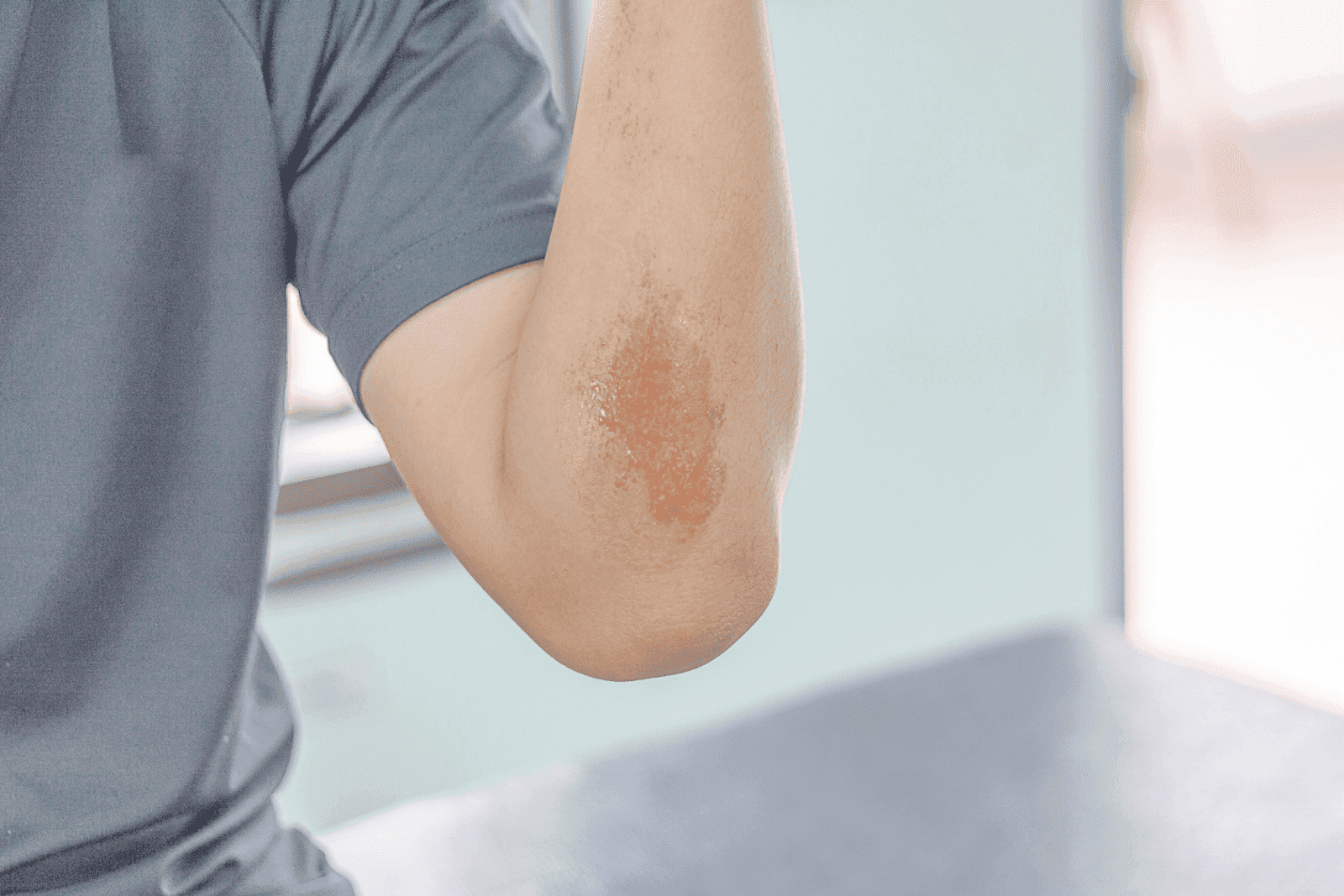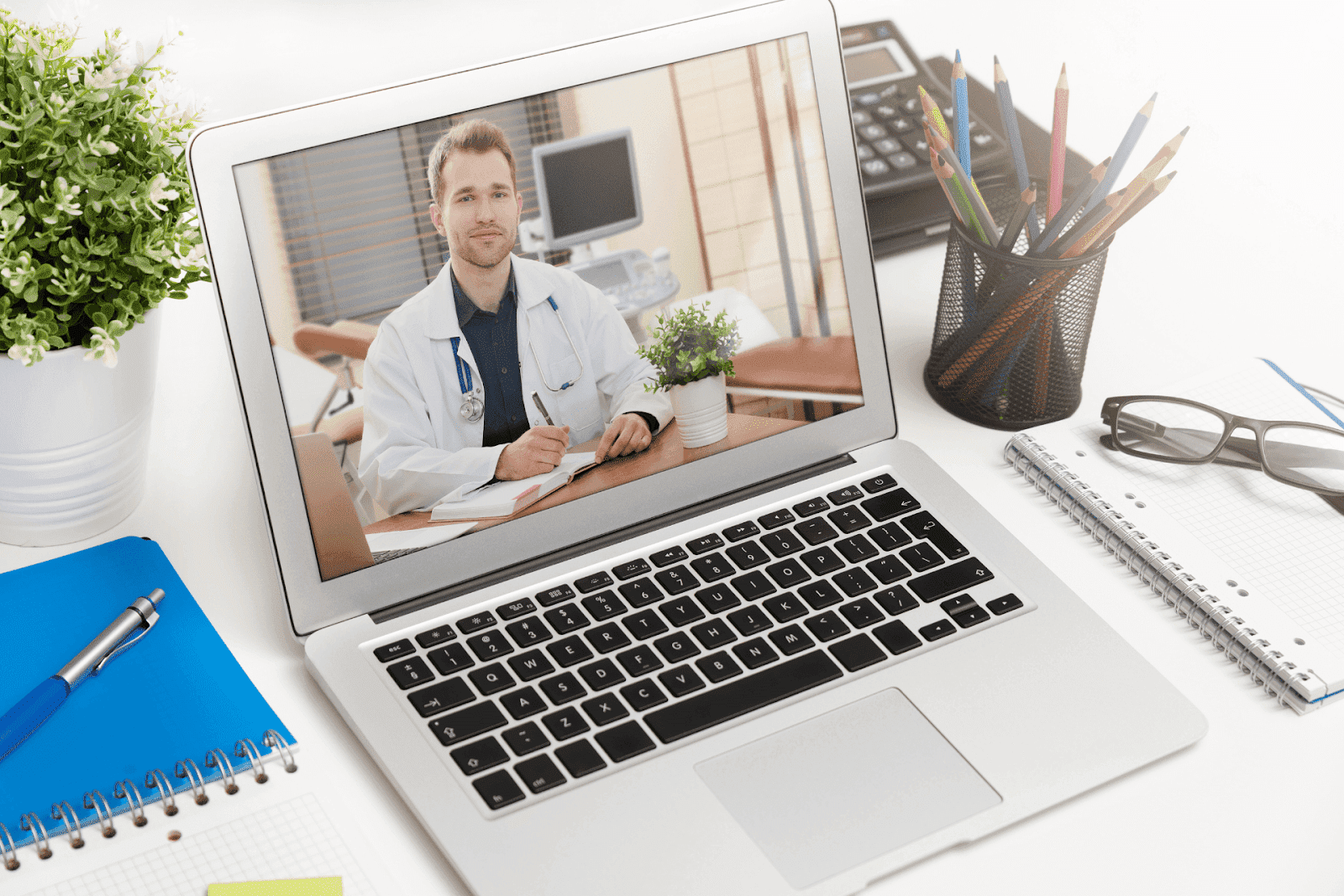How to Treat Road Rash Quickly and Safely
Road rash is a common injury, especially among cyclists, motorcyclists, and outdoor enthusiasts. It occurs when the skin scrapes against a rough surface, causing abrasions [...]
Read More
Medically reviewed by Alan Lucks | MD, Alan Lucks MDPC Private Practice - New York on October 12th, 2025.
Road rash is a common injury, especially among cyclists, motorcyclists, and outdoor enthusiasts. It occurs when the skin scrapes against a rough surface, causing abrasions that can range from mild to severe. Proper and prompt treatment is essential to prevent infection, reduce scarring, and promote fast healing. This guide covers everything you need to know about treating road rash quickly and safely, including when to seek professional medical advice and how telehealth services like Doctronic.ai can help.
Road rash happens when friction removes the top layers of skin, exposing the underlying tissue. This can lead to pain, bleeding, and inflammation. The severity of road rash varies depending on the force and surface involved. Minor abrasions might only affect the epidermis, while deeper injuries can reach the dermis or even the muscle.
Because the skin acts as a barrier against bacteria and viruses, any break in the skin increases the risk of infection. Moreover, dirt, gravel, and other debris often get embedded in the wound, complicating the healing process. Immediate and thorough cleaning is crucial to minimize complications.
In addition to the physical pain and potential for infection, road rash can also have psychological effects. Many individuals experience anxiety or fear about riding again after a fall, which can hinder their recovery and confidence. The visible scars left behind can serve as a constant reminder of the incident, leading to feelings of self-consciousness or embarrassment. Understanding these emotional responses is essential for a holistic approach to recovery, as addressing mental well-being can be just as important as physical healing.
Furthermore, the healing process for road rash can vary significantly based on several factors, including the individual's overall health, age, and the care taken during recovery. Keeping the wound clean and covered can help promote healing and reduce scarring. In some cases, medical intervention may be necessary, especially if the wound is deep or shows signs of infection. Healthcare professionals may prescribe antibiotics or recommend specific wound care techniques to ensure optimal recovery. This multifaceted approach to treatment not only aids in physical healing but also supports the individual's emotional resilience as they navigate the aftermath of their injury.
 Step-by-Step Guide to Treating Road Rash at Home
Step-by-Step Guide to Treating Road Rash at HomeBefore treating road rash, evaluate the extent of the injury. Minor abrasions with superficial skin damage can often be treated at home. However, if the wound is deep, bleeding heavily, or shows signs of infection such as swelling, pus, or increasing redness, seek medical attention immediately. It’s also important to consider the location of the injury; road rash on joints or areas with a lot of movement may require more careful treatment to ensure proper healing and to avoid complications.
Cleaning is the most crucial step in treating road rash. Start by gently rinsing the wound with cool, clean water to remove dirt and debris. Avoid using harsh soaps or chemicals directly on the wound, as they can irritate the skin. If debris remains, use sterile tweezers to carefully remove it. In some cases, rinsing with a saline solution can be more effective and less painful. Keeping the wound clean reduces the risk of infection and speeds up healing. Additionally, consider using a gentle, non-alcoholic antiseptic wipe around the area to further cleanse the skin without irritating it.
After the initial cleaning, apply a warm compress for a few minutes to help open up the pores and facilitate further cleaning. This can also provide some comfort to the injured area, especially if the road rash is extensive. Remember to always wash your hands thoroughly before and after handling the wound to prevent introducing any bacteria.
If the wound is bleeding, apply gentle pressure with a clean cloth or sterile gauze. Elevate the injured area if possible to reduce blood flow. Most minor abrasions stop bleeding within a few minutes. If bleeding persists or is heavy, seek professional care. It’s crucial to remain calm during this process, as stress can increase heart rate and blood flow, potentially worsening the bleeding.
In cases where the bleeding is more significant, consider using a clean, dry cloth to apply pressure while keeping the area elevated. If you have access to a first aid kit, a hemostatic dressing can be used to help control bleeding more effectively. Continuously monitor the injured person for signs of shock, such as pale skin, rapid breathing, or confusion, which may require immediate medical intervention.
Once the wound is clean and dry, apply a thin layer of antibiotic ointment to help prevent infection and keep the wound moist. This can also reduce itching and discomfort during healing. It’s advisable to choose an ointment that is specifically formulated for wound care, as these products often contain ingredients that promote healing and can help soothe the skin.
Use a non-stick sterile dressing or bandage to cover the road rash. This protects the wound from further injury and contamination. Change the dressing daily or whenever it becomes wet or dirty. Additionally, consider using a breathable adhesive bandage that allows air circulation while still providing protection. This can help the healing process by keeping the wound moist, which is essential for skin regeneration.
When applying the dressing, ensure that it is not too tight, as this could restrict blood flow and cause additional discomfort. If the area is prone to friction, such as on an elbow or knee, you may want to use a padded dressing to provide extra cushioning and prevent the bandage from rubbing against the skin.
Keep an eye on the wound for redness, swelling, increased pain, warmth, or discharge. These symptoms may indicate infection and require prompt medical evaluation. It’s also wise to track any changes in the wound’s appearance over time. If you notice any unusual odor or if the pain escalates rather than diminishes, these could be warning signs that the healing process is not progressing as it should.
In addition to visual monitoring, pay attention to your overall health. If you develop a fever or feel unusually fatigued, this could indicate that the body is fighting an infection. Keeping a record of your symptoms can be helpful when discussing your condition with a healthcare provider, should you need to seek further assistance.
While many cases of road rash can be managed at home, some situations call for professional medical care. Deep wounds, large areas of skin loss, or injuries involving joints and muscles should be evaluated by a healthcare provider.
Additionally, if you experience fever, chills, or worsening symptoms, it’s important to consult a doctor. However, visiting a clinic or urgent care center is not always convenient or necessary.
Telehealth services like Doctronic.ai offer a modern solution. Doctronic is an AI-powered doctor that provides fast, accurate, and personalized medical advice online. You can get a comprehensive assessment of your road rash, treatment recommendations, and answers to your questions in seconds, all from the comfort of your home.
Doctronic’s AI draws on the latest peer-reviewed medical research to ensure you receive the most up-to-date care advice. If needed, you can also schedule an inexpensive video visit with a licensed doctor 24/7, available in all 50 states, for further evaluation and treatment.
Contrary to old beliefs that wounds should dry out, keeping road rash moist with ointments and dressings promotes faster healing and reduces scarring. Use products recommended by healthcare providers or AI services like Doctronic.ai to maintain the right moisture balance.
As the wound heals, it may itch or form scabs. Resist the urge to pick or scratch, as this can reopen the wound, introduce bacteria, and increase scarring.
Proper hydration and a balanced diet rich in vitamins, especially vitamin C and zinc, support skin repair and immune function. This helps your body recover more efficiently from road rash and other injuries.
New skin is sensitive to UV rays, which can cause discoloration and slow healing. Once the wound has closed, apply sunscreen or cover the area with clothing when outdoors.
Prevention is always better than treatment. Wearing protective gear such as helmets, gloves, long sleeves, and padded clothing can significantly reduce the risk and severity of road rash during biking, motorcycling, or skating.
Maintaining your equipment and being aware of your surroundings also help avoid accidents. In case of a fall, knowing how to respond quickly and treat road rash can make a big difference in your recovery.
Doctronic.ai stands out as a leader in AI-powered healthcare, offering free AI doctor visits that provide personalized, evidence-based medical advice instantly. With over 10 million users and growing rapidly, Doctronic combines the speed of AI with the expertise of licensed doctors available for video consultations at affordable prices.
This innovative platform is handy for injuries like road rash, where timely advice can prevent complications. Whether you need a quick diagnosis, a second opinion, or ongoing care, Doctronic remembers your medical history and tailors recommendations to your unique needs.
 Fast and Affordable Guidance for Wound Care
Fast and Affordable Guidance for Wound CareRoad rash can be painful and concerning, but with prompt and proper care, most injuries heal well without complications. Clean the wound thoroughly, protect it, and monitor for infection. When in doubt, consult a healthcare professional through convenient telehealth services like Doctronic.ai to get fast, reliable medical guidance.
By following these steps and leveraging modern technology, you can treat road rash quickly and safely, minimizing discomfort and promoting a smooth recovery.
Don't let road rash or any other medical concern slow you down. With Doctronic, you're just seconds away from quality care that's faster, smarter, and more personal. Our AI doctor is revolutionizing the way you receive medical advice, providing you with the most up-to-date, peer-reviewed information available. Say goodbye to waiting rooms and hello to immediate, personalized attention from an AI that remembers every detail of your medical history. For those times when you need more than AI, our telehealth video visits with licensed doctors are available 24/7 in all 50 states, for less than $40. Join over 10 million satisfied users and experience the most personal care at your fingertips. Skip the line. Talk to an AI Doctor Now, for free.
Most minor abrasions heal completely with proper cleaning, antibiotic ointment, and daily dressing changes within two weeks. Watch closely for infection signs like red streaking, pus, or fever, which require prompt medical attention. If you're unsure about wound severity or proper care techniques, Doctronic can provide personalized treatment guidance.
Road rash is a common injury, especially among cyclists, motorcyclists, and outdoor enthusiasts. It occurs when the skin scrapes against a rough surface, causing abrasions [...]
Read More